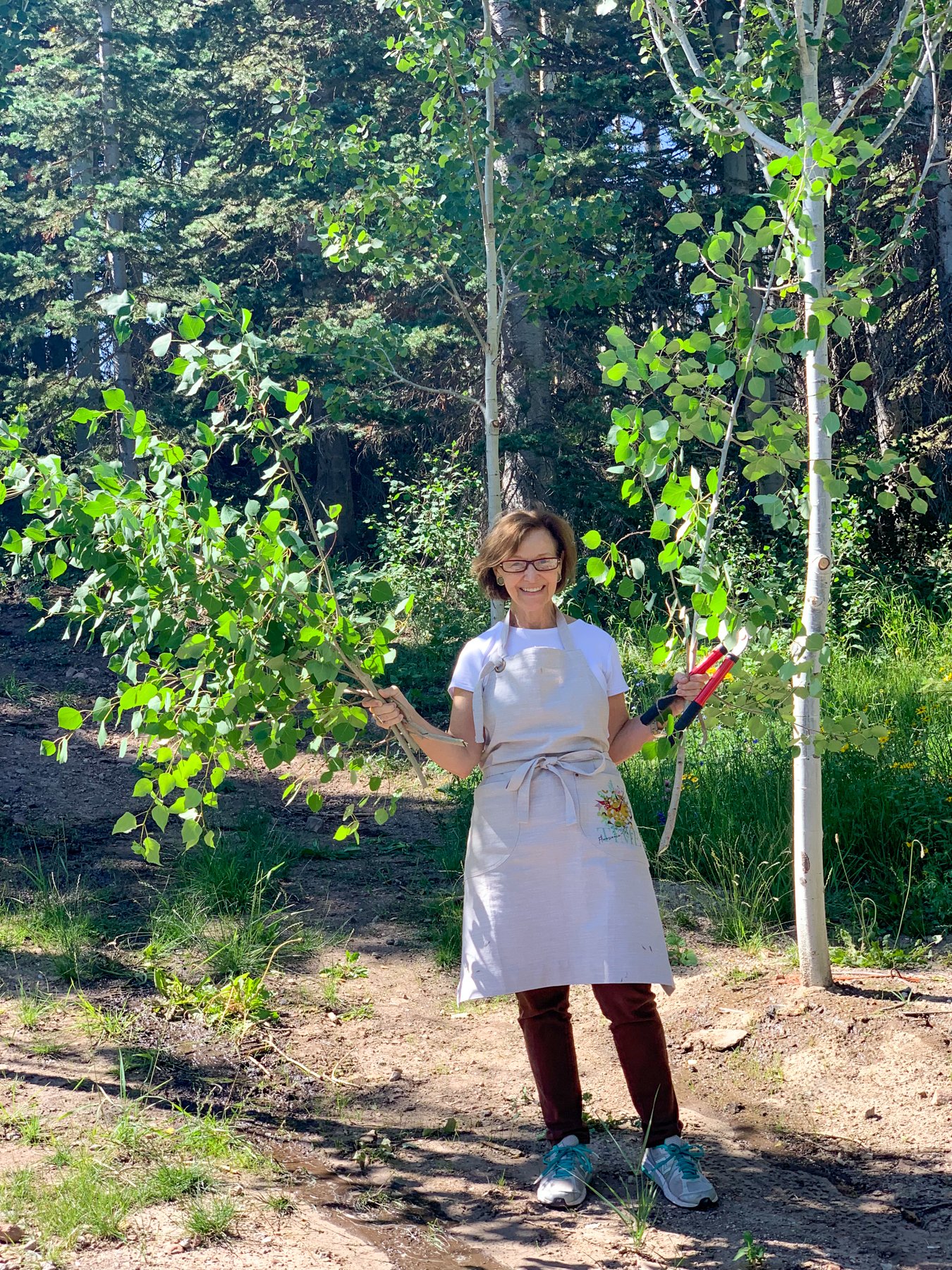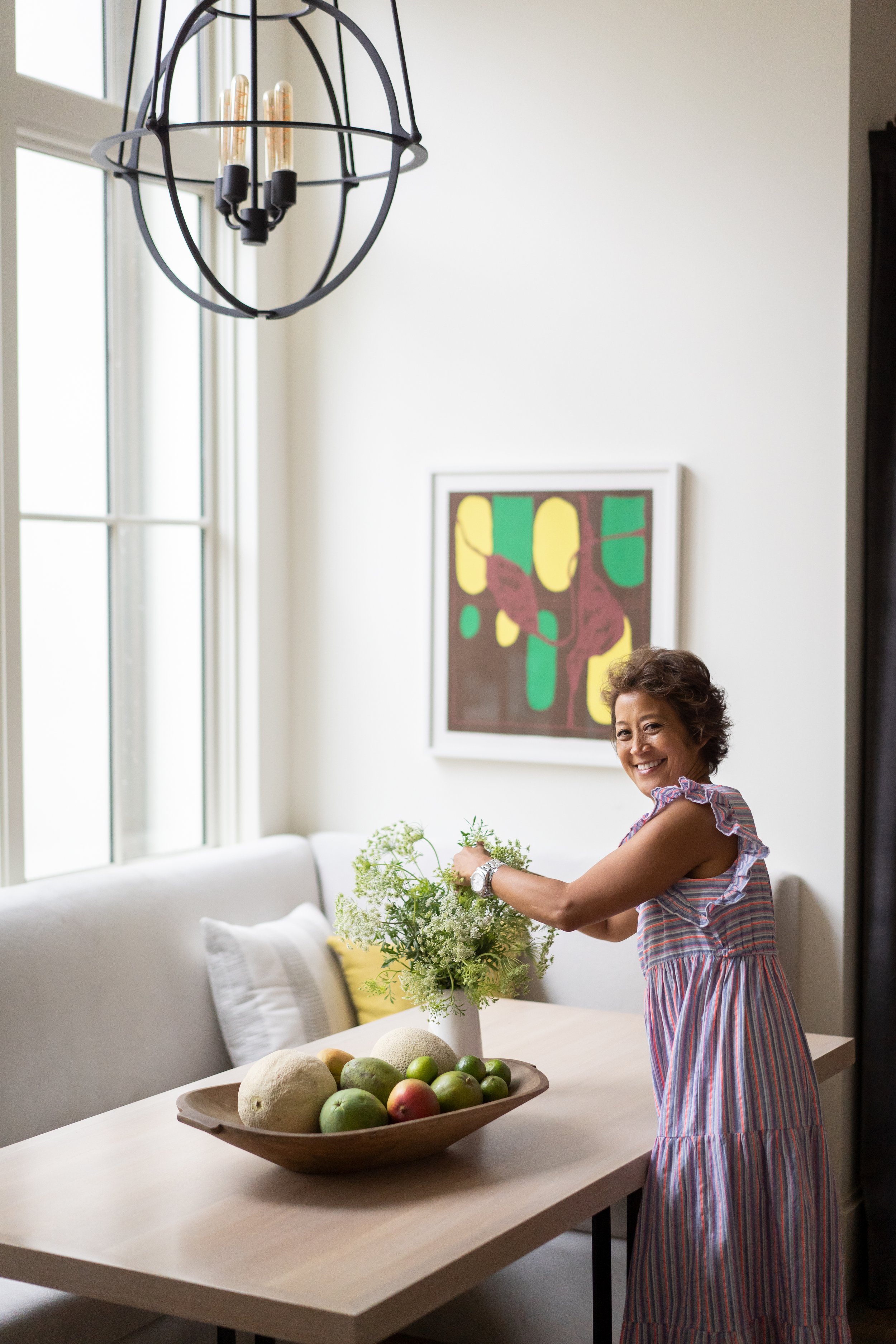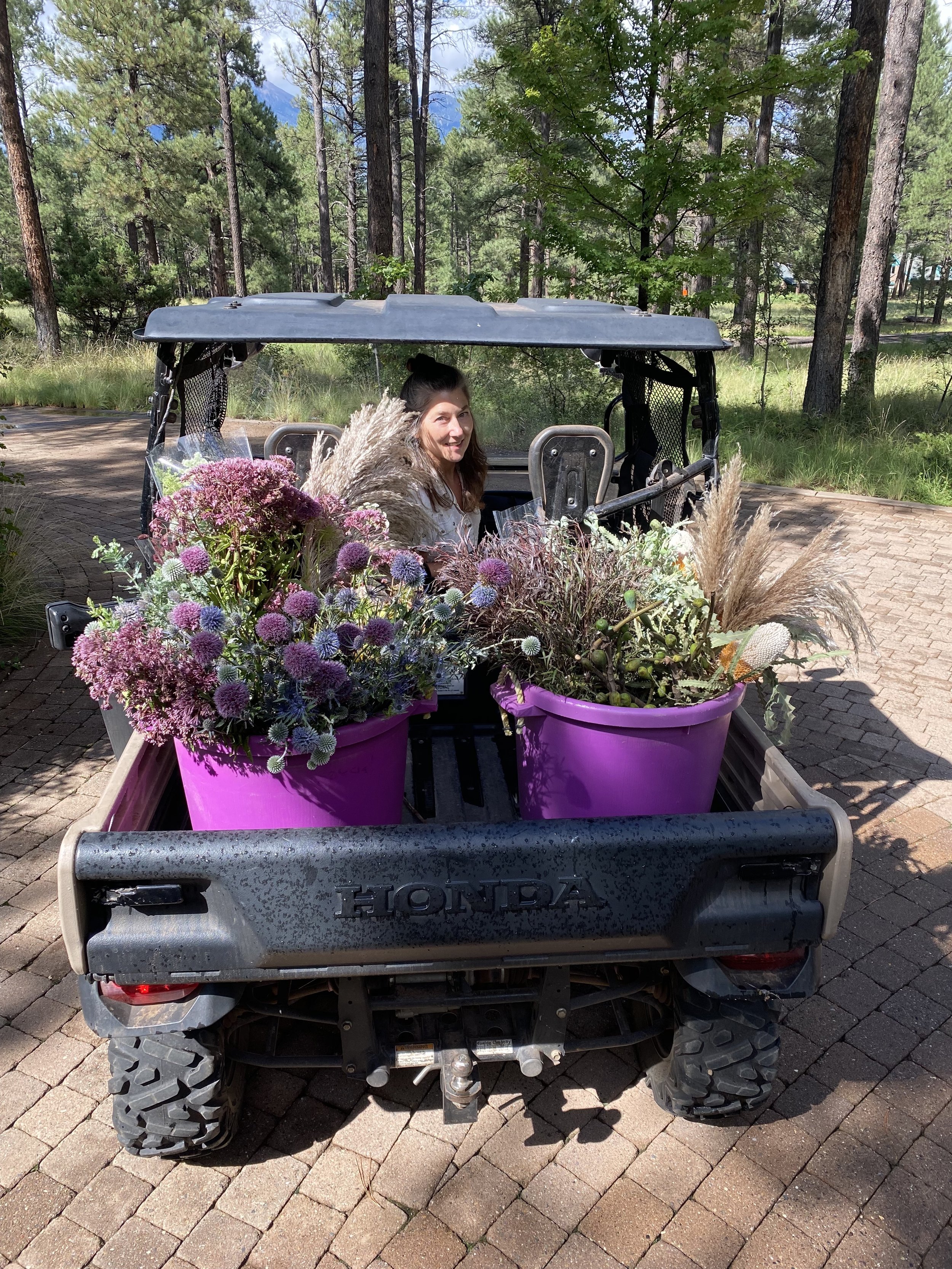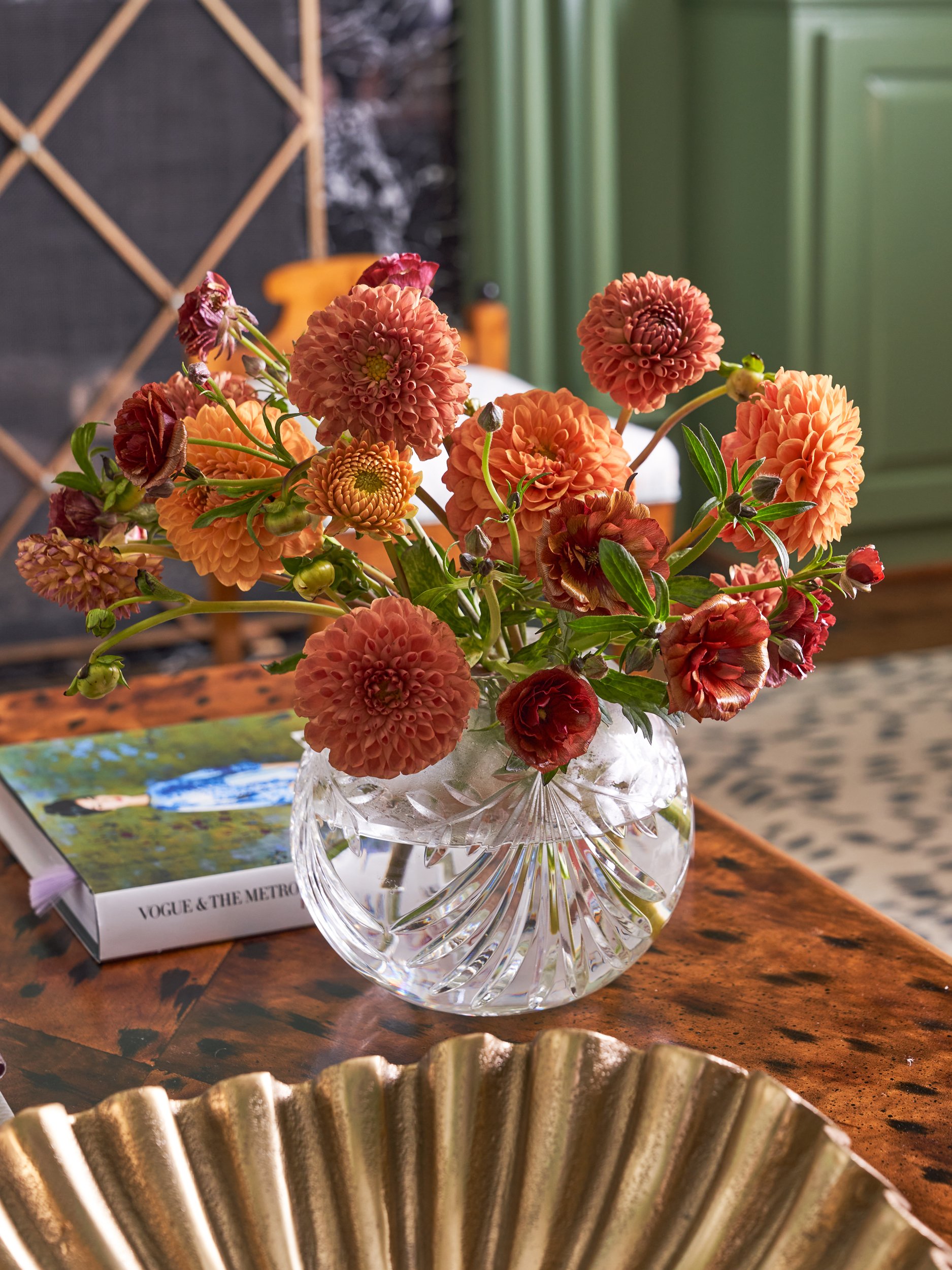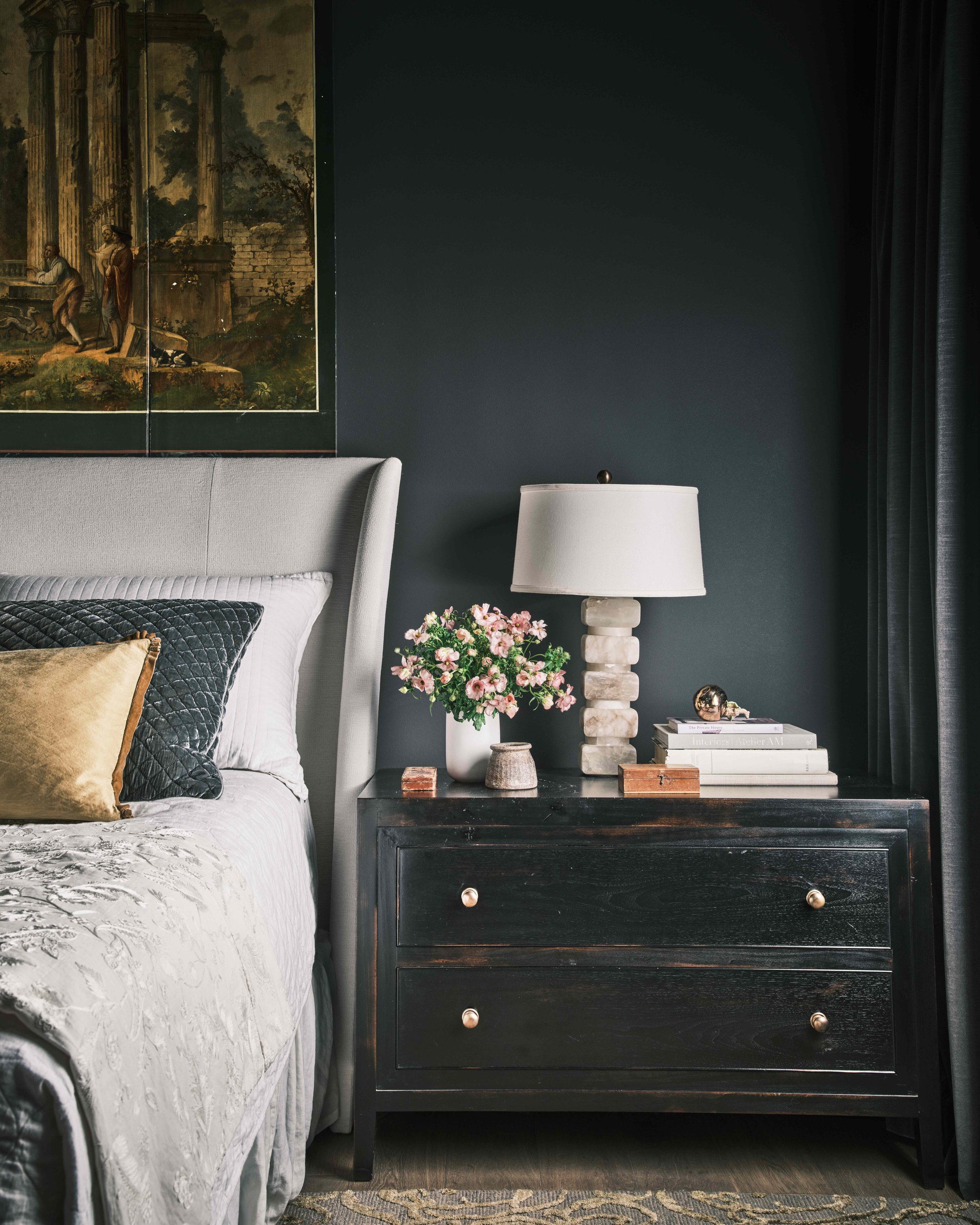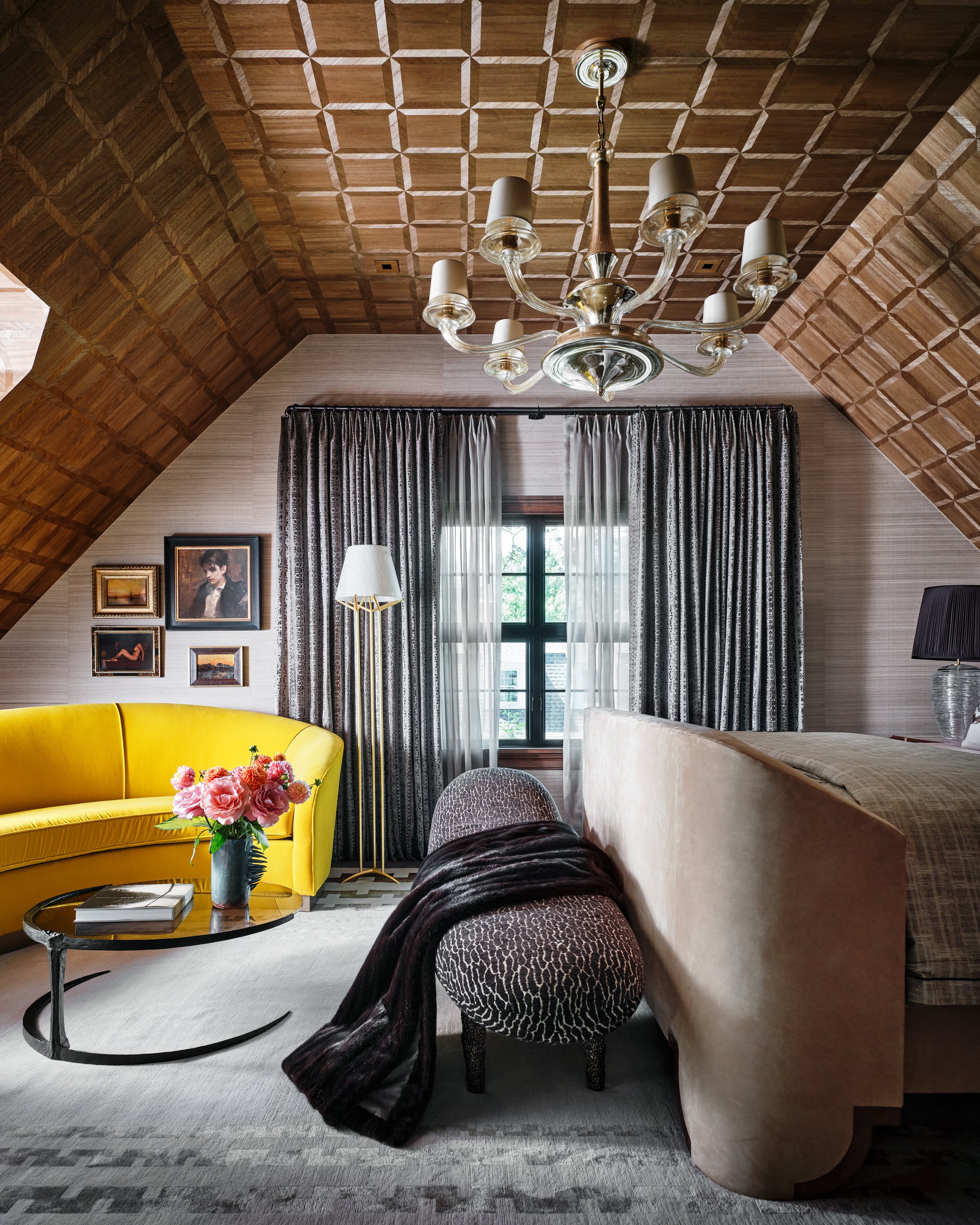Interior Designer: Tori Rubinson; Stylist: Melanie McKinley
All photographs: Stephen Karlisch
Floral arrangements are so critical when styling interiors for photography. Look through Instagram or the latest shelter publications and you’ll see that the most successful and stunning rooms have some sort of flowers, branches or greenery. Florals are so key to a room’s styling, making a space look fresh and literally alive, even if they aren’t the first thing you focus on when looking at the photo. But there’s a balance between the florals and your interiors. The photos are being taken to show your work in the best way possible, so you don’t want to distract from that with a fussy or over-the-top display. Here are some of the guidelines for florals – and be sure to scroll down for some amazing Instagram accounts to follow for inspiration.
Do You Need a Floral Stylist?
There are three ways you can work with florals for a photo shoot. First, there are interior stylists who are really good at designing floral arrangements. Be sure to ask to see some of their work before you hire them, of course, but having one person to help with all of the styling is going to make things easier. Or you can work with an interior stylist and a floral designer as a team. If you’re really good at putting together arrangements, then you can take on that role, of course. I know of at least three top designers who took courses in botanical arrangements to ensure they could do that for their photos and clients. But remember that you’re already going to be playing several roles during a photo shoot – art director, furniture mover, photo approver – so you may be adding more stress than you need. The key is to get someone who not only understands that the florals need to be gorgeous in the room, but that they also need to create the balance and symmetry that photos need.
Styling Tips
The most important thing to remember is that whatever plants, flowers, or greenery that you bring into the room are there to add life and enhance the look. They are not meant to be the focus. That’s why you’ll see vases of blooms in a single color – they complement the decor and don’t become the center of attention.
When you do the walkthrough with the photographer and stylist (and/or florist), decide which angles are going to be shot, and capture them with quick photos, even on your phone. You can then look at those photos and decide where florals are needed.
You can use arrangements to hide something (like a switch), to fill a “blank” area in the photo, or to balance a surface. Knowing the size and shape of what you need will also help you decide on what type of flowers, branches or plants you may need. For example, you could use a small tree in a corner that seems bare. You can use a small arrangement on top of a stack of books to make a more vertical line. Use your arrangements in strategic ways.
And select the type of flowers and plants based on your decor style. A more formal room may need a more artistic arrangement, whereas a boho room may look best with a relaxed grouping of natural flowers.
Finally, if you or an interior stylist will be creating the arrangements, be sure you use a local wholesale florist. Because you are considered a trade, you can get much better pricing that way. Order your flowers ahead of time, too, so you get exactly what you want and so they’re as fresh as possible.
Current Trends
Floral trends come and go – remember the ficus tree that seemed to be in every shot for a while? And the fiddle leaf is almost oversaturated now. Here are the trends that are hot today:
Branches. We’ve seen these for a while, but they aren’t going anywhere. In fact, arrangements of branches have only gotten bigger…literally. These work best in large rooms, to the side of the photo, or when they almost blend into the background. They also can “date” your photo, meaning you can use branches of fall leaves if you want to have your photo considered for an autumn issue. Or flowering branches can make a spring-like statement. The key is to let them arch the way they would as they grow. Don’t force them into positions that look unnatural.
Dried Flowers. We’re not talking about faux looks or strange potpourri types of botanicals. Today’s look is inspired by Parisian markets, so you see more lavender, eucalyptus, and small pampas grasses. Single stems are popular, as well as tied bouquets, and you see a lot of dried grasses mixed with fresh cut flowers, too.
Single Colors. This look has been on-trend for a long time, and there’s a reason. Bouquets with a lot of color are distracting and will distract from your amazing interior design. They also can make the room look fussy or too busy. This subtle arrangements of one color are complementary to the room, and almost blend into the background. The photo’s viewer will still subconsciously take in the flowers and plants, but it won’t be what they focus on. You can go with a bit of an ombre look with subtle variations of pink, for example, but be careful that it isn’t distracting.
Go Natural. Natural flowers are the go-to today. So instead of tight formal roses, you’ll see wild or rambler roses. Dahlias are having a moment, and so are peonies, ranunculus, poppies and long streams of ivy. The idea is to have loose arrangements that look like they were just plucked from the garden. In those natural arrangements, you want to only use one variety of flower at a time. So a loose bouquet of hydrangea, or a couple of stems of poppies in a small vase. If you do put several varieties together, follow the one-color rule.
Some of our favorite stylists offer some insight into their process of designing with florals:
Jenny O'Connor @jennyoconnorstudio
“I like the floral that is right for the space and the shot. Sometimes that’s fluffy and fussy and sometimes that’s lean and sculptural. It all depends on the space and where the camera is. And a lot of getting a great floral moment comes down to choosing an appropriate vessel for what you want that floral to achieve for the shot.
Maybe this illustrates the difference? But the first I chose the vessel and directed what we wanted here (tall and shapely and wild) and the second I actually did the floral for (the opposite).”
Photography: Stephen Karlisch; Interior Design: Strike by Chad Dorsey; Coco & Dash; Laura Lee Clark
Styling: Jenny O’Connor
Anita Sarsidi anitasarsidi.com
“My floral style tends to be something a bit natural in the room so it doesn’t take center stage but complements the interior and enhances the room.”
Styling by Anita Sarsidi for Mahon Interior Design
Frances Bailey @francesfinds
“My flower philosophy is to select flowers and plants that help support the visual story the interior designer wants to tell. I have a pre-shoot call where I go over each space and we talk about the flower/plant story. Some designers are really into it and some like me to decide but first I need to understand what they want the room to say. I also try to use flowers that they haven’t used in prior shoots or things on their website portfolio to keep things interesting. I buy from the NYC Flower Market but try to use local, in season flowers whenever possible as well.”
Styled by Frances Bailey for Morgan Madison Design.
Who to Follow
Here are inspiring Instagram accounts for interior design, floral designers, and botanical accounts that will give you great ideas for your own floral styling:
Jenny O'Connor @jennyoconnorstudio
Anita Sarsidi anitasarsidi.com
Jimmie Henslee @hensleejimmie
Steve Cordony @stevecordony
Adam Fortner @adamfortner
Melanie McKinley @melanie.mckinley.stylist
Colin King @colinking
Flower Magazine @flowermagazine
Floret Flower @floretflower
Sarah Winward @sarah_winward
Frances Bailey @francesfinds
French Country Cottage @frenchcountrycottage
Justina Blakeney @justinablakeney
Sophia Morena-Bunge @isaisafloral
Charlotte Moss @charlottemossco





